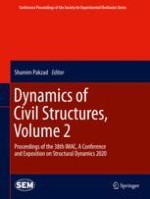Dynamics of Civil Structures, Volume 2: Proceedings of the 38th IMAC, A Conference and Exposition on Structural Dynamics, 2020, the second volume of eight from the Conference brings together contributions to this important area of research and engineering. The collection presents early findings and case studies on fundamental and applied aspects of the Dynamics of Civil Structures, including papers on:
Structural Vibration
Humans & Structures
Innovative Measurement for Structural Applications
Smart Structures and Automation
Modal Identification of Structural Systems
Bridges and Novel Vibration Analysis
Sensors and Control
